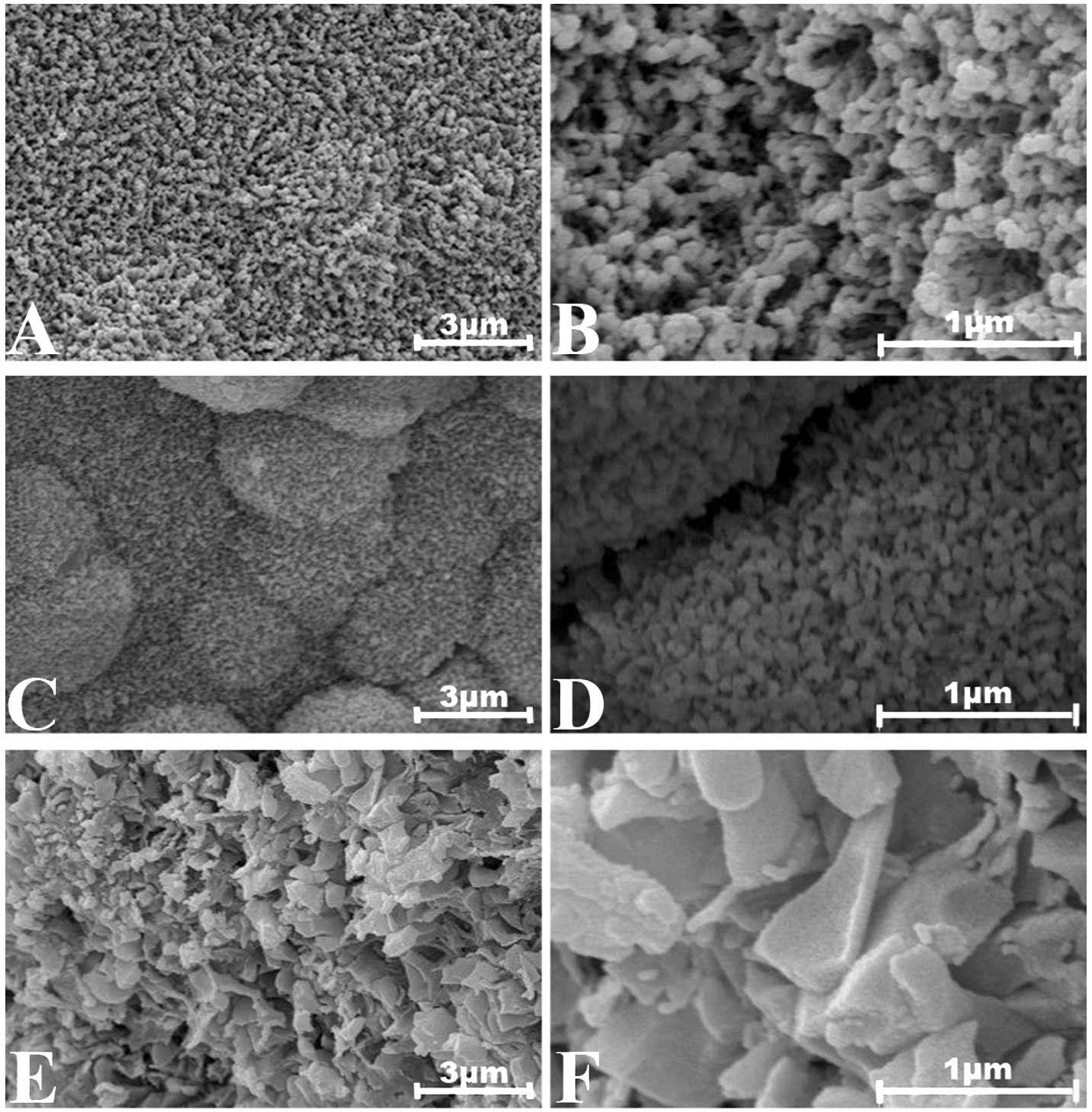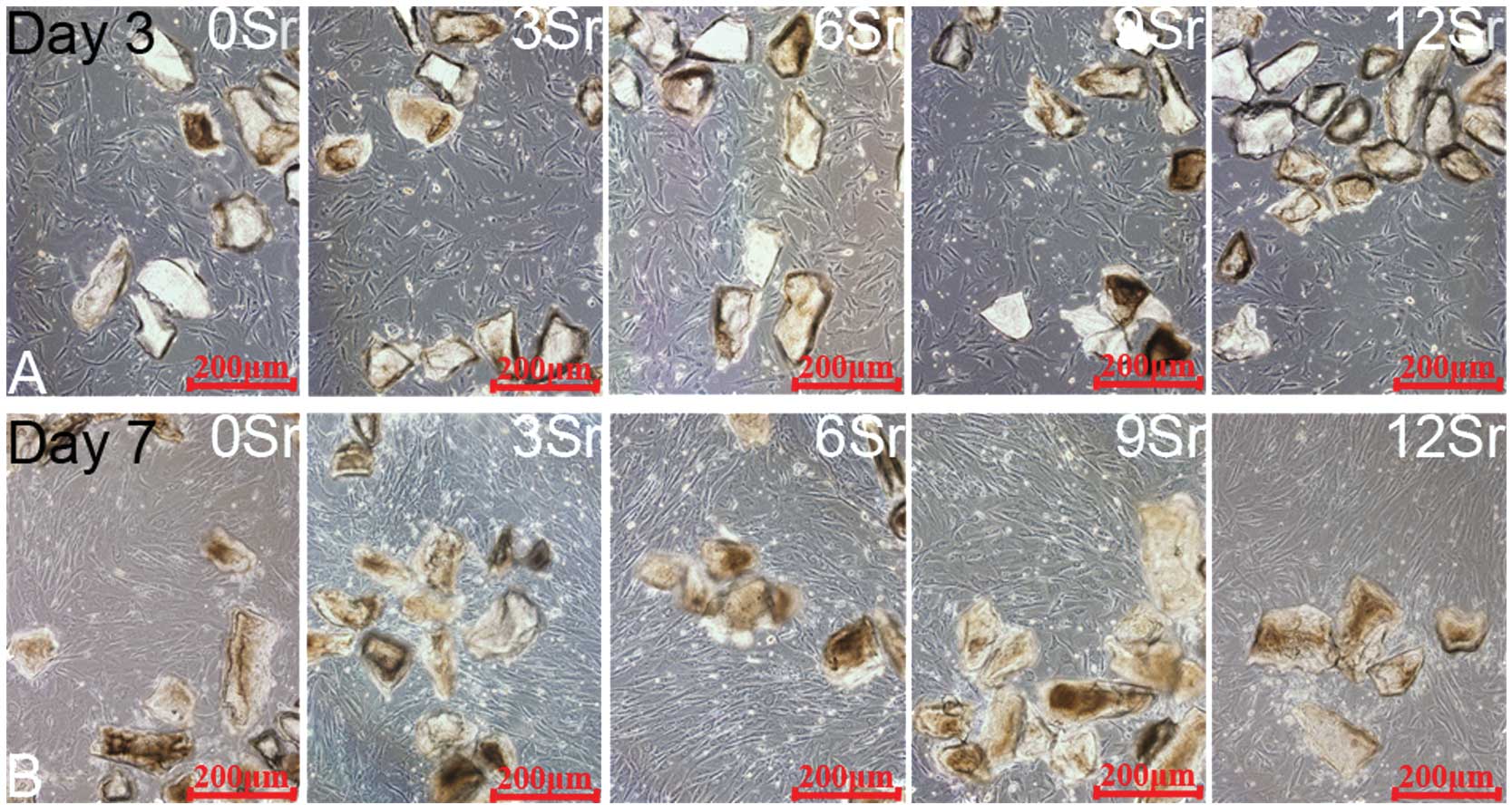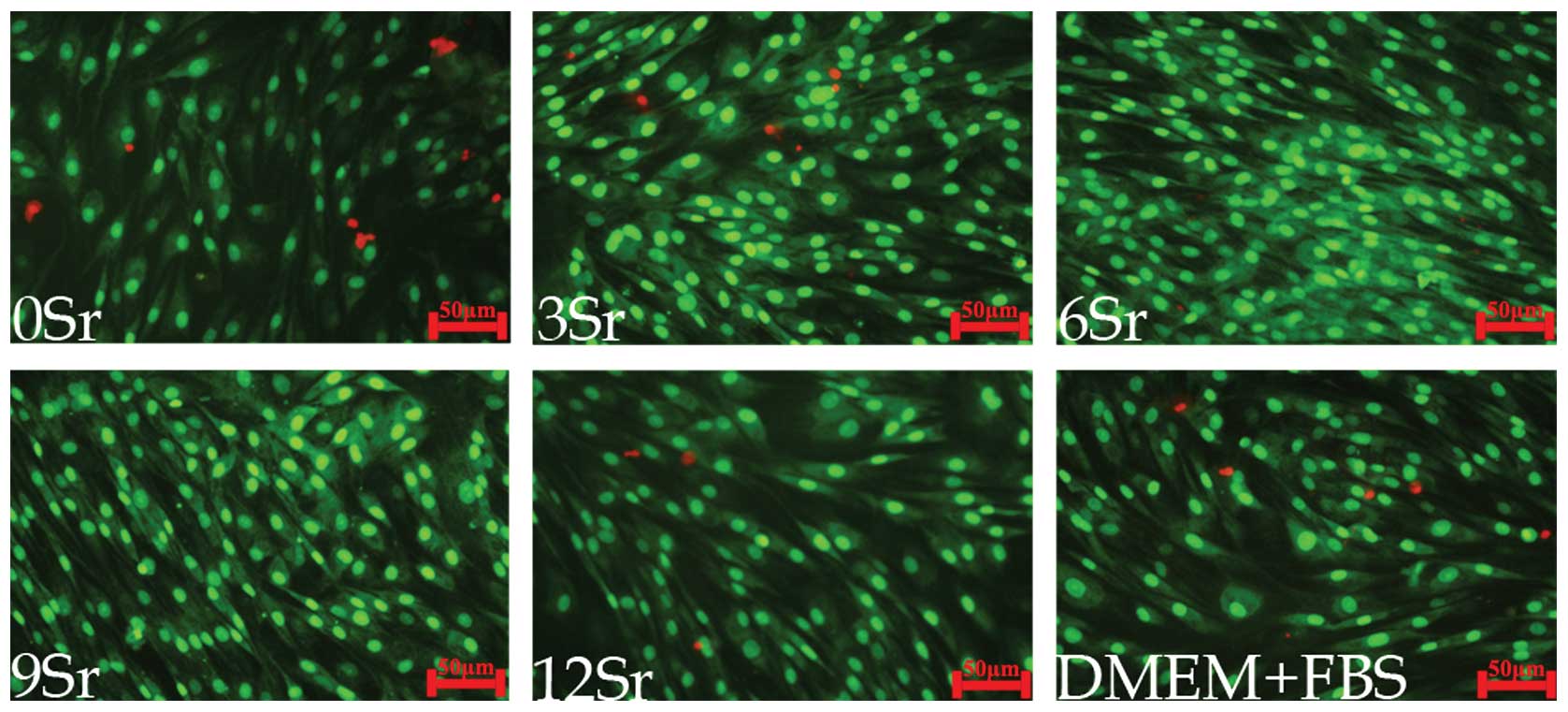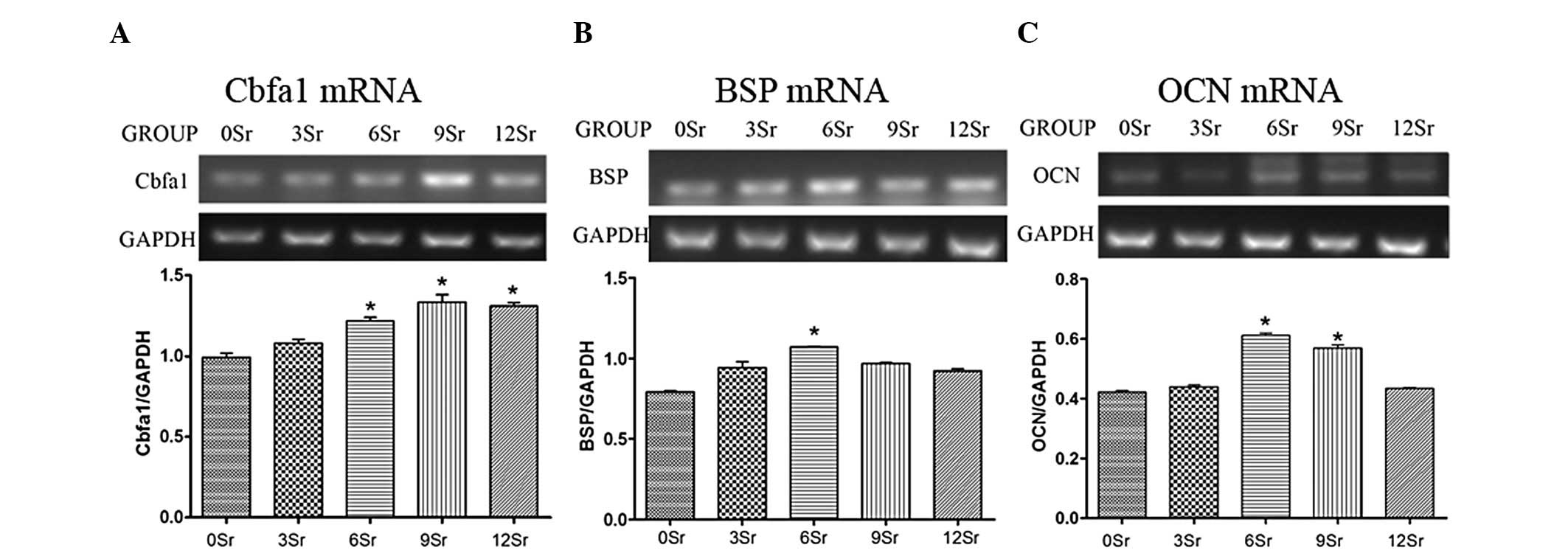|
1
|
Rahaman MN, Brown RF, Bal BS and Day DE:
Bioactive glasses for nonbearing applications in total joint
replacement. Semin Arthroplasty. 17:102–112. 2006. View Article : Google Scholar
|
|
2
|
Jones JR, Gentleman E and Polak J:
Bioactive glass scaffolds for bone regeneration. Elements.
3:393–399. 2007. View Article : Google Scholar
|
|
3
|
Hench LL, Splinter RJ, Allen WC and
Greenlee TK: Bonding mechanisms at the interface of ceramic
prosthetic materials. J Biomed Mater Res. 5:117–141. 1971.
View Article : Google Scholar
|
|
4
|
Hench LL and Wilson J: Surface-active
biomaterials. Science. 226:630–636. 1984. View Article : Google Scholar : PubMed/NCBI
|
|
5
|
Hamadouche M, Meunier A, Greenspan DC, et
al: Long-term in vivo bioactivity and degradability of bulk
sol-gel bioactive glasses. J Biomed Mater Res. 54:560–566.
2001.
|
|
6
|
Richard MNC: Bioactive Behavior of a
Borate Glass. MS Thesis. University of Missouri-Rolla; 2000
|
|
7
|
Fu Q, Rahaman MN, Fu H and Liu X:
Silicate, borosilicate, and borate bioactive glass scaffolds with
controllable degradation rate for bone tissue engineering
applications. I Preparation and in vitro degradation. J Biomed
Mater Res A. 95:164–171. 2010. View Article : Google Scholar
|
|
8
|
Fu Q, Rahaman MN, Bal BS, Bonewald LF,
Kuroki K and Brown RF: Silicate, borosilicate, and borate bioactive
glass scaffolds with controllable degradation rate for bone tissue
engineering applications. II In vitro and in vivo biological
evaluation. J Biomed Mater Res A. 95:172–179. 2010. View Article : Google Scholar : PubMed/NCBI
|
|
9
|
Sila-Asna M, Bunyaratvej A, Maeda S,
Kitaguchi H and Bunyaratavej N: Osteoblast differentiation and bone
formation gene expression in strontium-inducing bone marrow
mesenchymal stem cell. Kobe J Med Sci. 53:25–35. 2007.PubMed/NCBI
|
|
10
|
Yang F, Yang D, Tu J, Zheng Q, Cai L and
Wang L: Strontium enhances osteogenic differentiation of
mesenchymal stem cells and in vivo bone formation by activating
Wnt/catenin signaling. Stem Cells. 29:981–991. 2011. View Article : Google Scholar : PubMed/NCBI
|
|
11
|
Peng S, Zhou G, Luk KD, et al: Strontium
promotes osteogenic differentiation of mesenchymal stem cells
through the Ras/MAPK signaling pathway. Cell Physiol Biochem.
23:165–174. 2009. View Article : Google Scholar : PubMed/NCBI
|
|
12
|
Verberckmoes SC, De Broe ME and D’Haese
PC: Dose-dependent effects of strontium on osteoblast function and
mineralization. Kidney Int. 64:534–543. 2003. View Article : Google Scholar : PubMed/NCBI
|
|
13
|
Qiu K, Zhao XJ, Wan CX, Zhao CS and Chen
YW: Effect of strontium ions on the growth of ROS17/2.8 cells on
porous calcium polyphosphate scaffolds. Biomaterials. 27:1277–1286.
2006. View Article : Google Scholar : PubMed/NCBI
|
|
14
|
Hurtel-Lemaire AS, Mentaverri R,
Caudrillier A, et al: The calcium-sensing receptor is involved in
strontium ranelate-induced osteoclast apoptosis. New insights into
the associated signaling pathways. J Biol Chem. 284:575–584. 2009.
View Article : Google Scholar : PubMed/NCBI
|
|
15
|
Wu C, Fan W, Gelinsky M, et al: Bioactive
SrO-SiO2 glass with well-ordered mesopores: characterization,
physiochemistry and biological properties. Acta Biomater.
7:1797–1806. 2011. View Article : Google Scholar : PubMed/NCBI
|
|
16
|
Pan HB, Zhao XL, Zhang X, et al: Strontium
borate glass: potential biomaterial for bone regeneration. J R Soc
Interface. 7:1025–1031. 2010. View Article : Google Scholar : PubMed/NCBI
|
|
17
|
Brown RF, Rahaman MN, Dwilewicz AB, et al:
Effect of borate glass composition on its conversion to
hydroxyapatite and on the proliferation of MC3T3-E1 cells. J Biomed
Mater Res A. 88:392–400. 2009. View Article : Google Scholar : PubMed/NCBI
|
|
18
|
Huang W, Day DE, Kittiratanapiboon K and
Rahaman MN: Kinetics and mechanisms of the conversion of silicate
(45S5), borate, and borosilicate glasses to hydroxyapatite in
dilute phosphate solutions. J Mater Sci Mater Med. 17:583–596.
2006. View Article : Google Scholar : PubMed/NCBI
|
|
19
|
Liu X, Huang W, Fu H, et al: Bioactive
borosilicate glass scaffolds: in vitro degradation and bioactivity
behaviors. J Mater Sci Mater Med. 20:1237–1243. 2009. View Article : Google Scholar : PubMed/NCBI
|
|
20
|
Rahaman MN, Day DE, Bal BS, et al:
Bioactive glass in tissue engineering. Acta Biomater. 7:2355–2373.
2011. View Article : Google Scholar : PubMed/NCBI
|
|
21
|
Day DEWJ, Brown RF and McMenamin KD:
Transformation of borate glasses into biologically useful
materials. Glass Technol. 44:75–81. 2003.
|
|
22
|
Reginster JY: Strontium ranelate in
osteoporosis. Curr Pharm Des. 8:1907–1916. 2002. View Article : Google Scholar : PubMed/NCBI
|
|
23
|
Buehler J, Chappuis P, Saffar JL,
Tsouderos Y and Vignery A: Strontium ranelate inhibits bone
resorption while maintaining bone formation in alveolar bone in
monkeys (Macaca fascicularis). Bone. 29:176–179. 2001.
View Article : Google Scholar : PubMed/NCBI
|
|
24
|
Reilly GC, Radin S, Chen AT and Ducheyne
P: Differential alkaline phosphatase responses of rat and human
bone marrow derived mesenchymal stem cells to 45S5 bioactive glass.
Biomaterials. 28:4091–4097. 2007. View Article : Google Scholar : PubMed/NCBI
|
|
25
|
Ni GX, Yao ZP, Huang GT, Liu WG and Lu WW:
The effect of strontium incorporation in hydroxyapatite on
osteoblasts in vitro. J Mater Sci Mater Med. 22:961–967. 2011.
View Article : Google Scholar : PubMed/NCBI
|
|
26
|
Gentleman E, Fredholm YC, Jell G, et al:
The effects of strontium-substituted bioactive glasses on
osteoblasts and osteoclasts in vitro. Biomaterials. 31:3949–3956.
2010. View Article : Google Scholar : PubMed/NCBI
|
|
27
|
Bonnelye E, Chabadel A, Saltel F and
Jurdic P: Dual effect of strontium ranelate: stimulation of
osteoblast differentiation and inhibition of osteoclast formation
and resorption in vitro. Bone. 42:129–138. 2008. View Article : Google Scholar : PubMed/NCBI
|
|
28
|
Caverzasio J: Strontium ranelate promotes
osteoblastic cell replication through at least two different
mechanisms. Bone. 42:1131–1136. 2008. View Article : Google Scholar : PubMed/NCBI
|




















